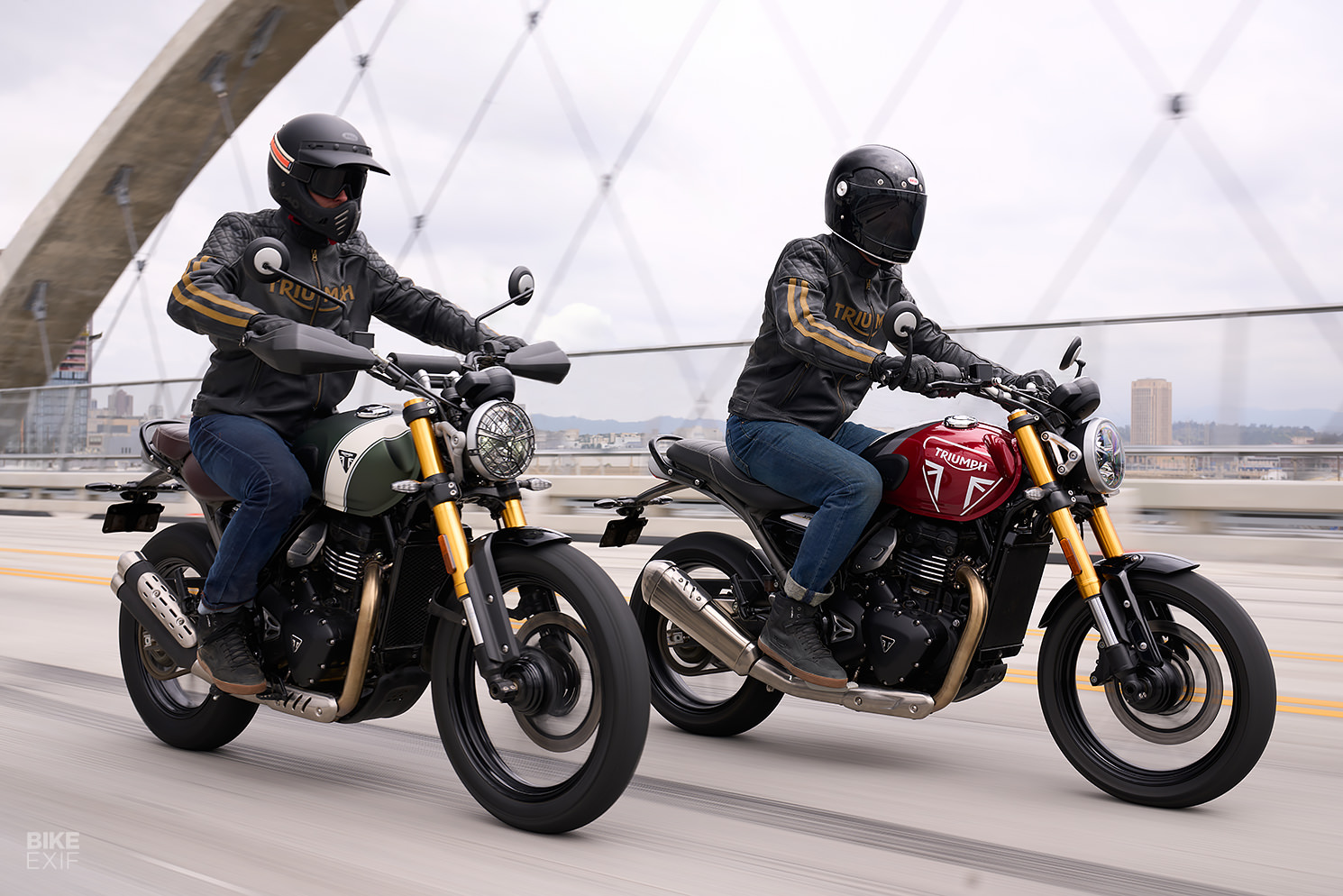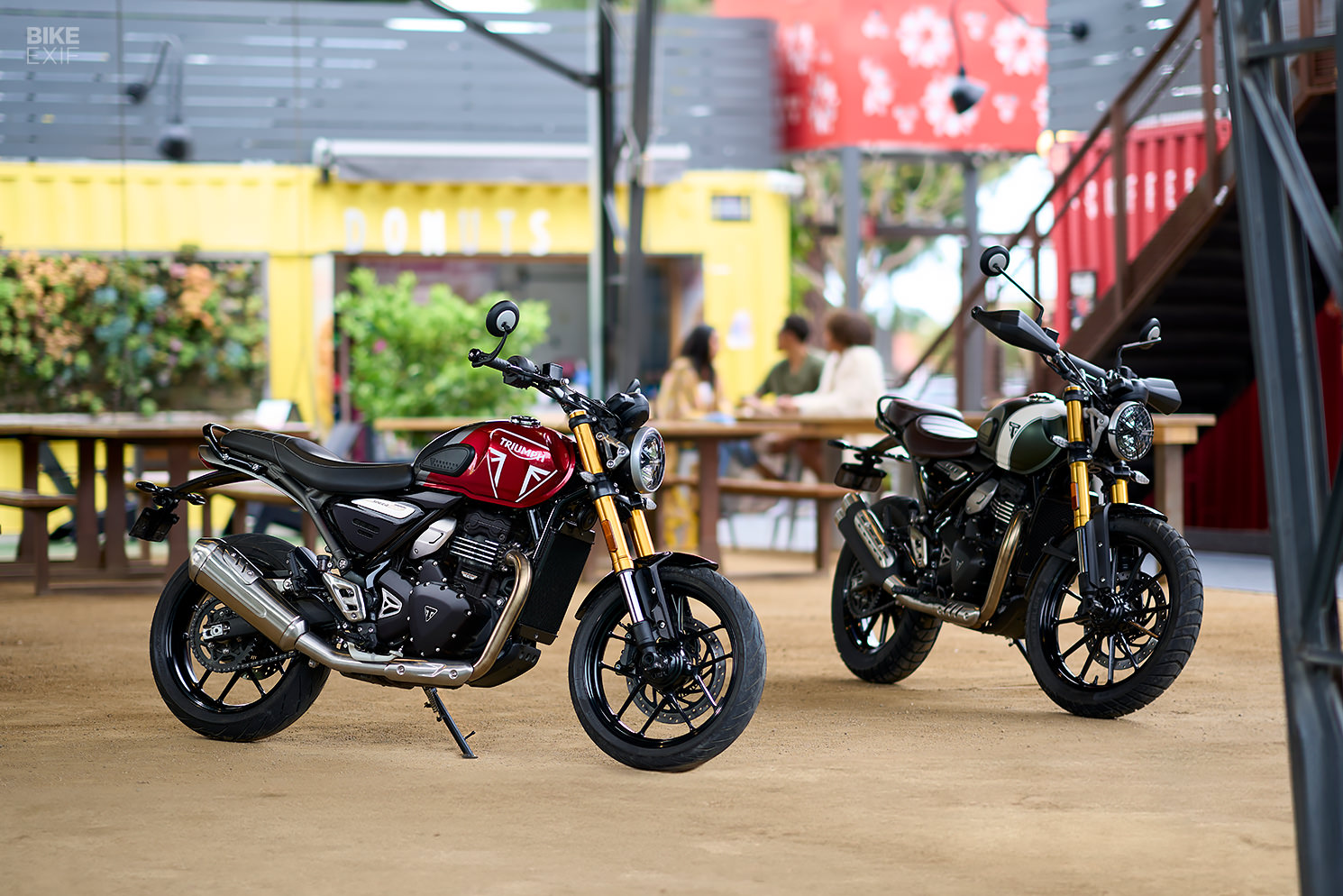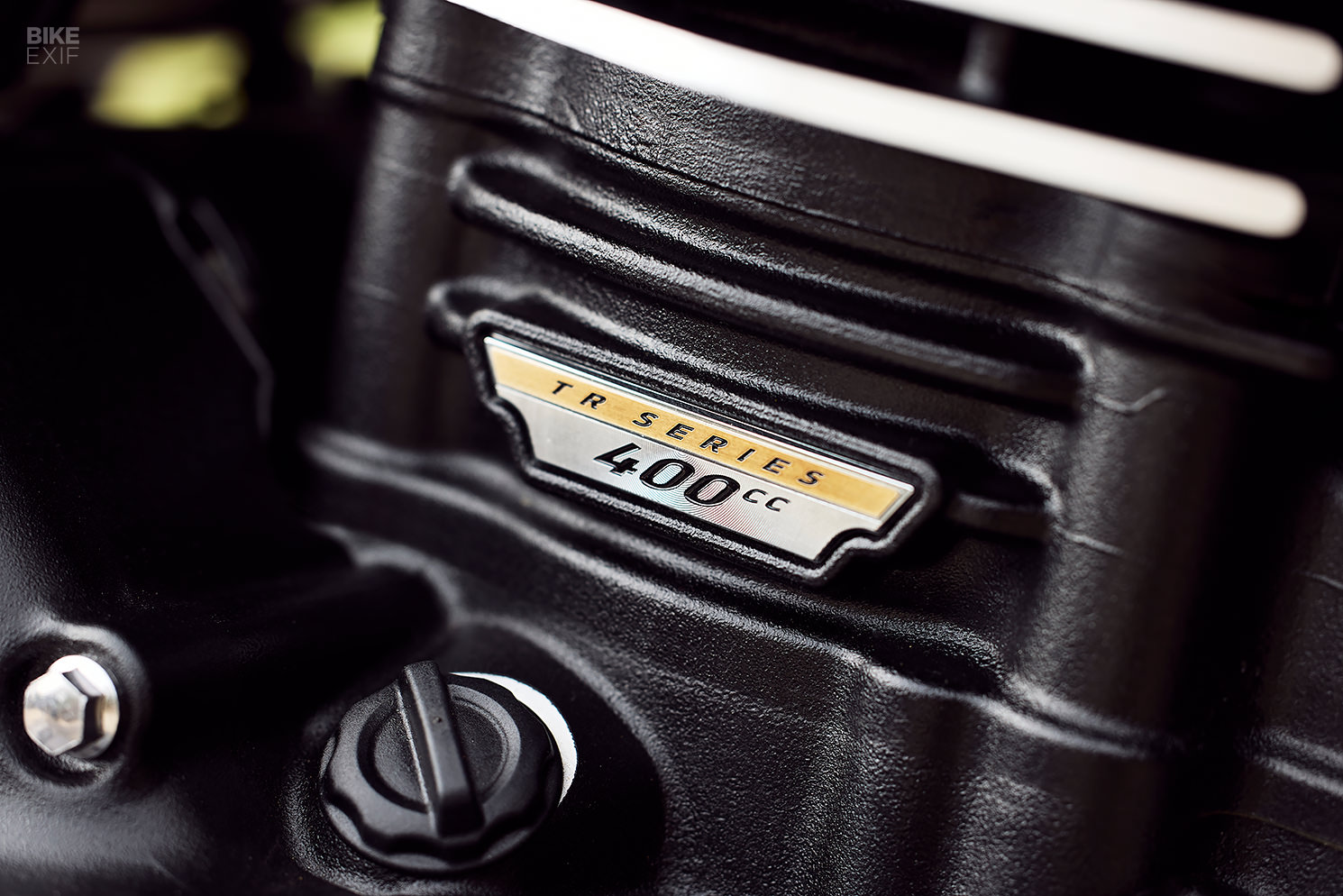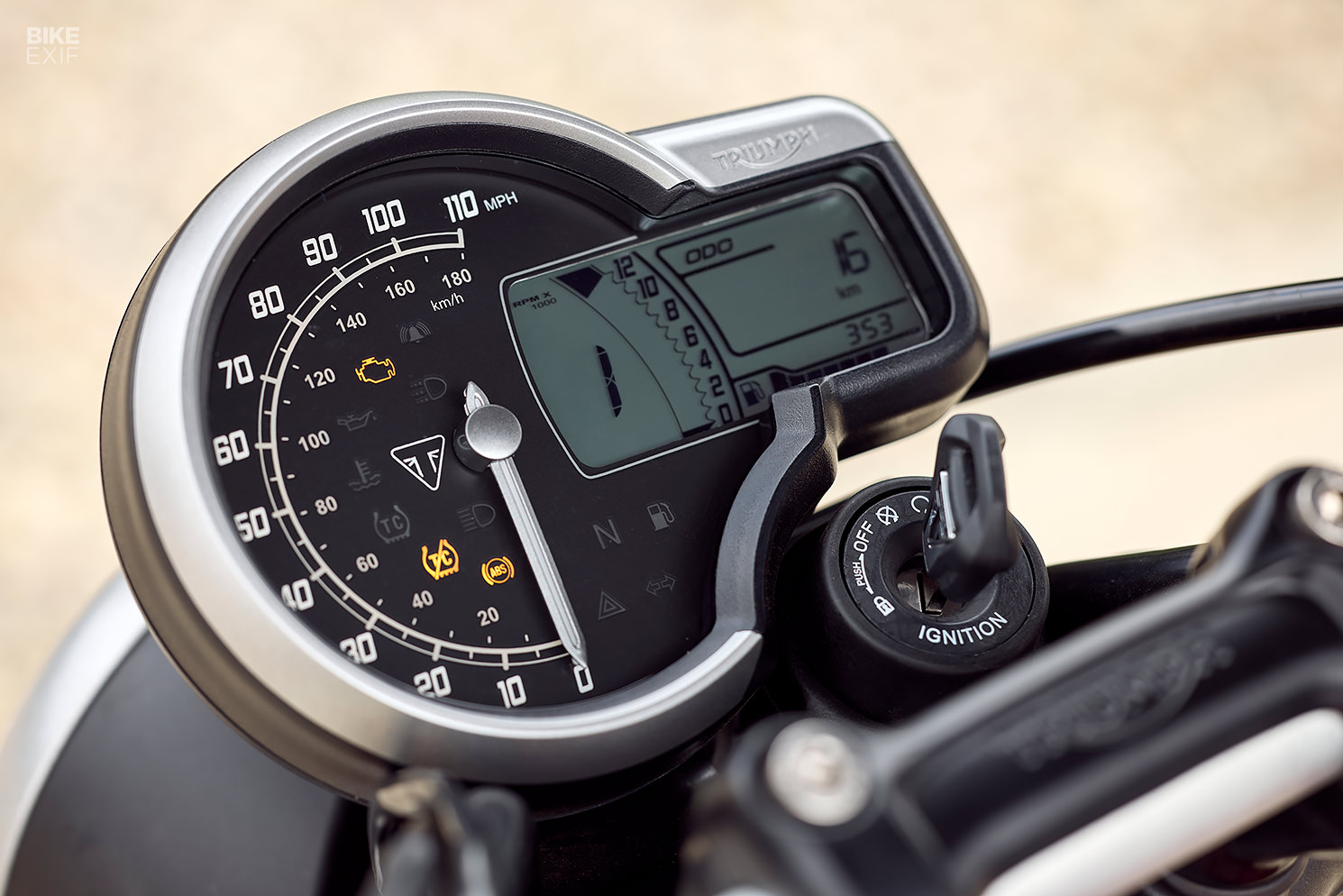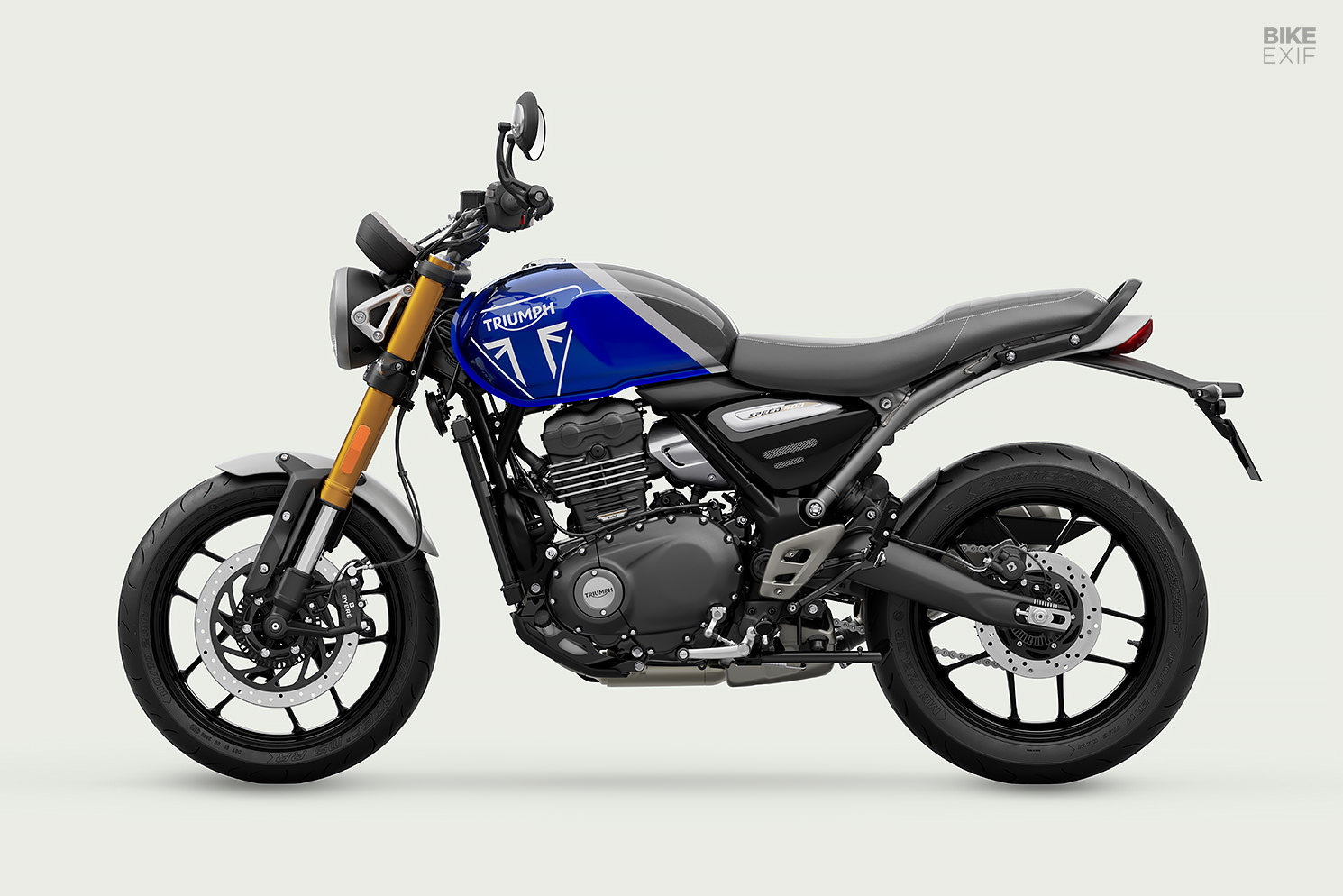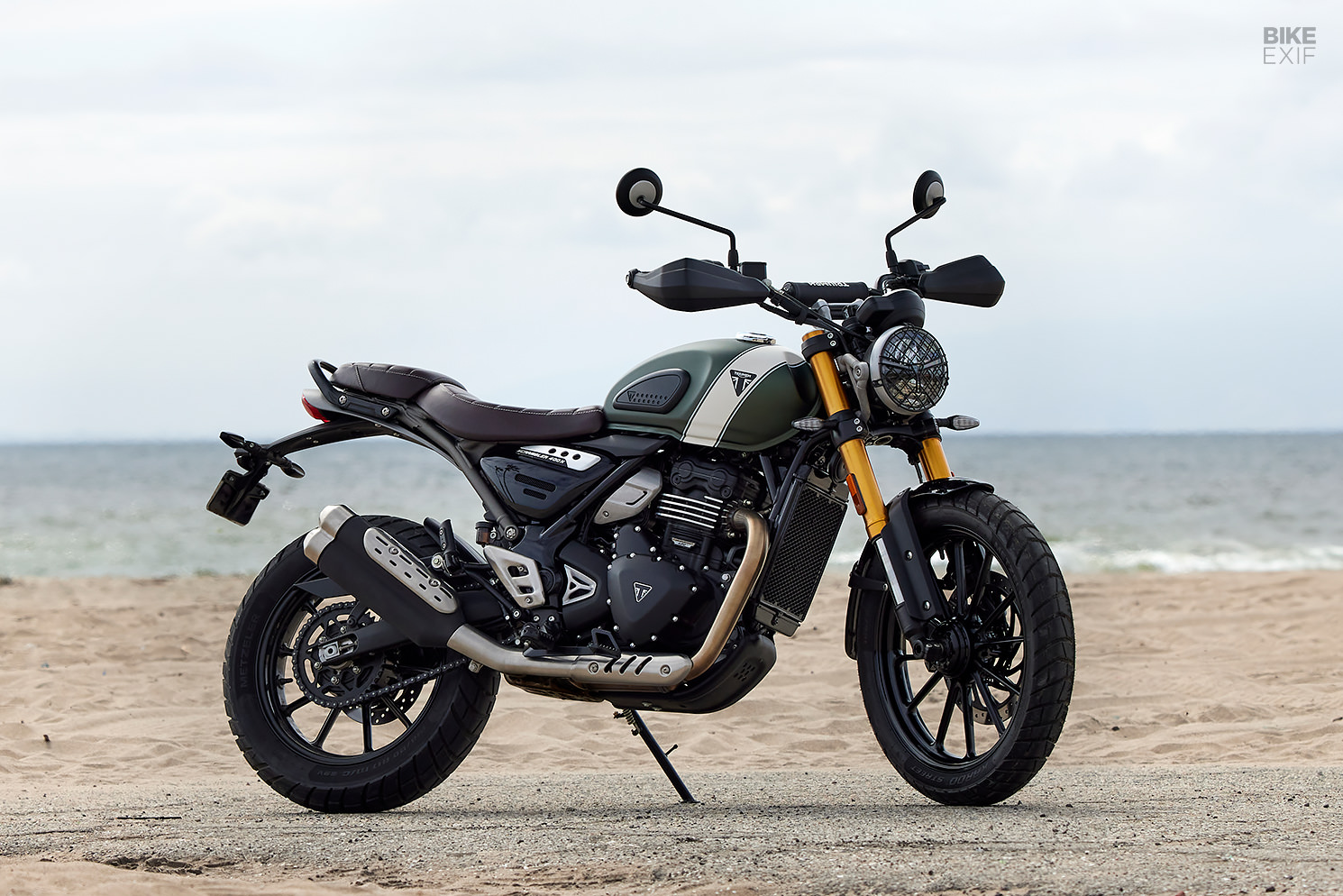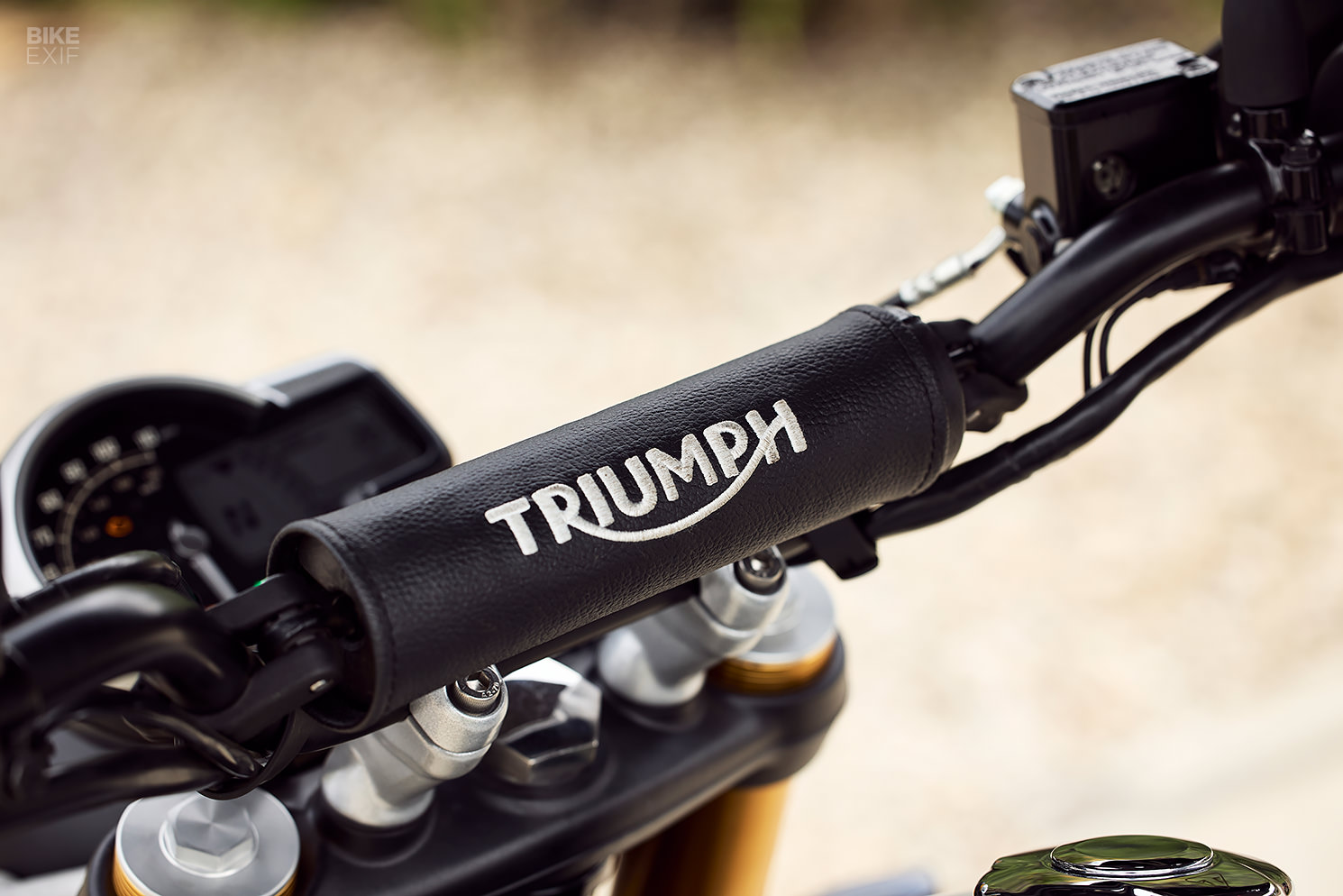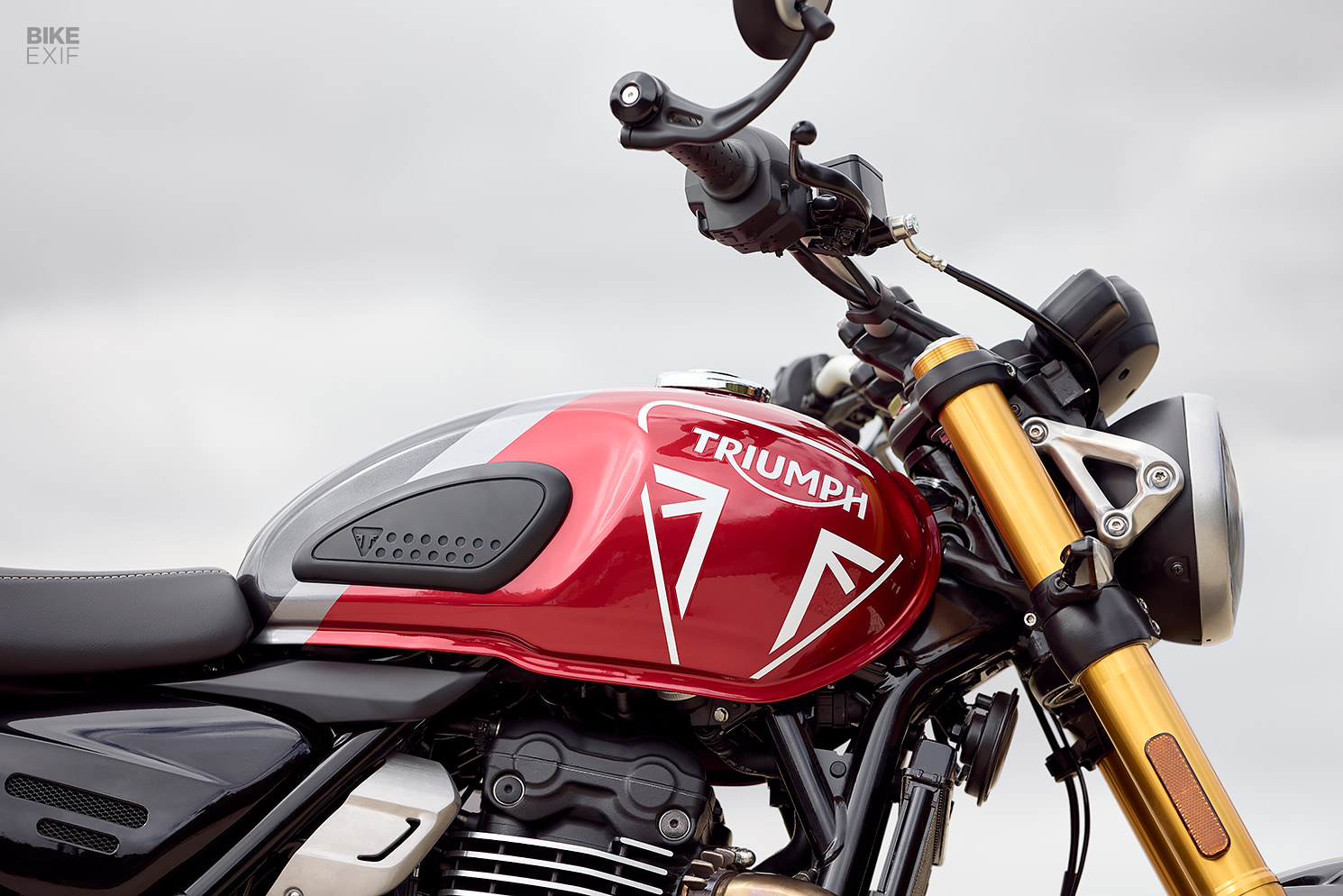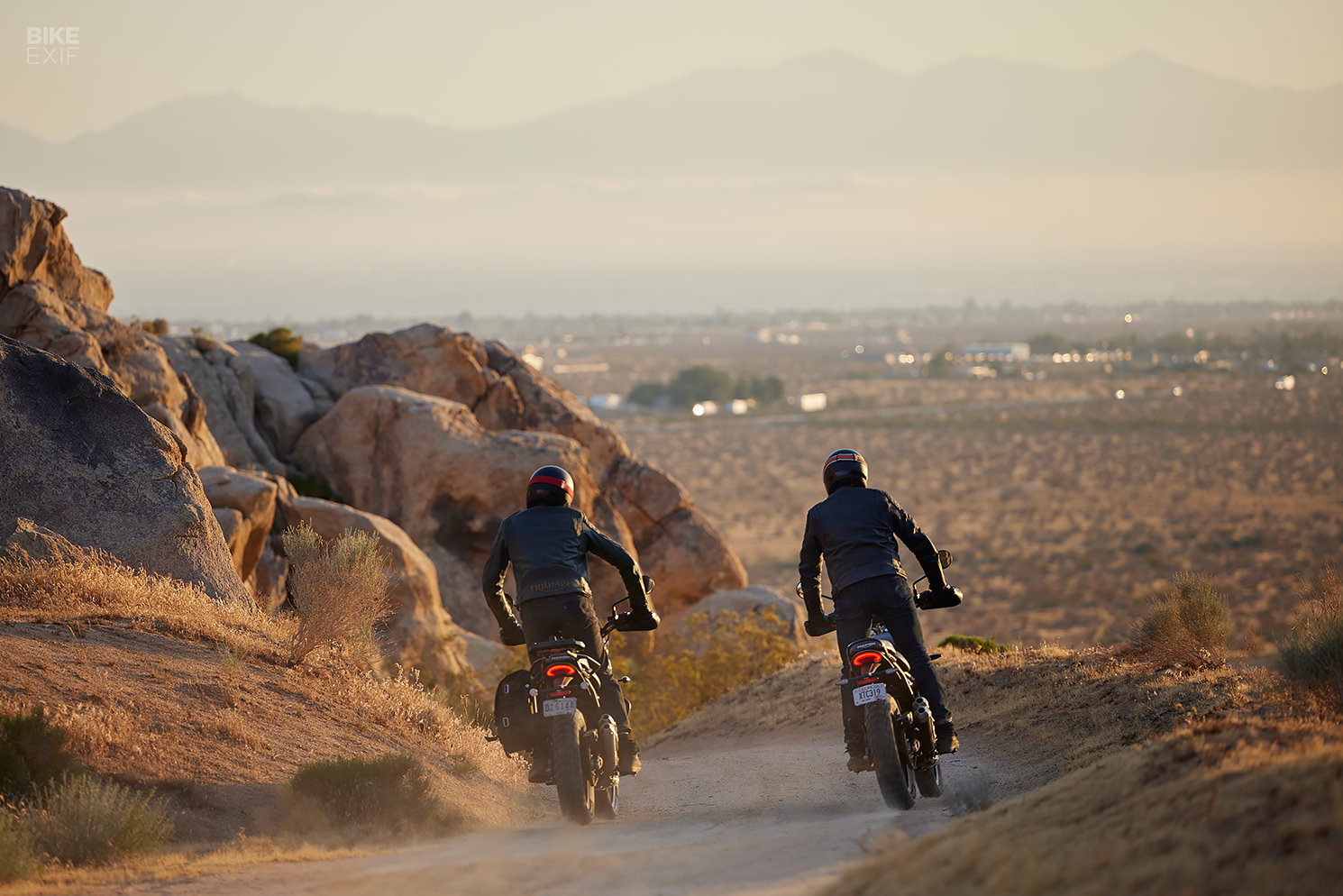Canyon carver: A BMW boxer restomod built for California’s twisties

Robert Sabel’s name is synonymous with ultra-clean BMW boxer restomods. His projects turn out so tidy, that it’s almost ironic that his California-based shop is called Roughchild. But they’re not just visually neat; Robert likes to imbue them with modern performance and reliability too.
This particular BMW boxer restomod was built for Randy Garver—a landscaper that counts the who’s who of Hollywood among his clients. “Now in his 60s, Randy had reached a point in his life where many of his friends had passed on,” Robert tells us. “He wanted the opportunity to ride the best motorcycle of his life now… before it’s too late.”

Robert sourced a 1985 BMW R80RT locally as a donor for the build. ”It belonged to the owner’s recently deceased father,” he explains, “who rode it sparingly, given the documented very low mileage. It just needed, well, everything, to get it roadworthy.”
“We bought the bike at roughly the same time we were moving into our new facility in Glendale, California, an existing motorcycle service shop. With existing orders on the books, I was keen to snap it up and get our first build underway in the new premises. With that we set about our mission—the R80 was stripped to the bones and thoroughly inspected for wear and tear before modifications commenced.”

A stock BMW R80 makes around 50 hp, but Randy and Robert wanted more from the vintage boxer. So Roughchild rebuilt the engine with a 1,070 cc kit from the BMW big-bore specialist, Siebenrock. Along with the bump in displacement, they added an upgraded cam and a twin spark ignition system.
The 1980s boxer motor now pushes out 75 hp (as verified on a dyno), and still uses its original airbox for reliability’s sake. It also looks brand new on the outside, finished in black with contrasting fins in all the right places, and adorned in custom Roughchild branding.

Take a peek underneath the motor, and you’ll spot a long and low oil pan. “That’s a special piece, made out of magnesium,” says Robert. “It has all the benefits of a deep sump pan without visually looking deep.”
“Extra oil cooling capacity becomes a vital piece of the puzzle when increasing the displacement as significantly as we did. This explains why we used an upgraded oil cooler in addition to the larger oil pan.”

For the suspension, Roughchild specced the BMW boxer with Öhlins components at both ends. The OEM wheels have been redone in satin black, and now sport modern Metzeler tires. Twin Brembo disc brakes slow the bike down up front, with the refurbished BMW drum brake doing duty at the back.
Custom yokes hold the upside-down forks in place, with OEM-style headlight brackets wrapped around the thicker fork uppers. They grip a JW Speaker adaptive LED headlight, supplied by Motodemic.

A digital Motogadget dash sits up top, followed by a set of handlebars that were fabricated specifically for this build. Robert wanted to keep the cockpit as uncluttered as possible, so the lever mounts are welded directly to the bars. Other considerations include tiny switches that are integrated into the left grip, internal wiring, and an internal throttle.
“The throttle now rides on a bearing,” says Robert. “It makes the motion of actuation incredibly smooth and, dare we say, dreamy.”

The bodywork is mostly standard Roughchild fare. The OEM fuel tank takes center stage, with a stubby fender up front, and a bobber seat for one out back. There’s no real subframe below the seat—just a tubular seat support that also houses an LED taillight.
Finishing off the lighting are stealthy Motogadget turn signals, and a pair of Denali spotlights. “Randy could light up a field and land a small aircraft, should he need to,” quips Robert.

As we’ve come to expect from Roughchild, the boxer’s paint job is as classy as they come. It’s a mostly black affair, save for a few pops of chrome and god pinstripes that match the Öhlins parts. Custom Roughchild roundels add an extra touch.
Compact and stylish, Roughchild’s newest BMW boxer restomod also looks like it’d be a fun ride too. “Randy is based in Ojai, California, and blessed with some of the state’s greatest riding roads,” says Robert.

“His favorite route, he told us, is a well-rehearsed 60-mile loop. He wanted a fast, reliable vintage motorcycle that had all the handling and stopping power of a modern machine. It’s a simple-looking machine, marrying high-end modern components and BMW parts from the airhead lineage.”
“Our best to you, Randy. May you ride the bike to the very last mile.”
Roughchild Motorcycles | Facebook | Instagram | Images by Leo Mayorquin

Continue reading...

Robert Sabel’s name is synonymous with ultra-clean BMW boxer restomods. His projects turn out so tidy, that it’s almost ironic that his California-based shop is called Roughchild. But they’re not just visually neat; Robert likes to imbue them with modern performance and reliability too.
This particular BMW boxer restomod was built for Randy Garver—a landscaper that counts the who’s who of Hollywood among his clients. “Now in his 60s, Randy had reached a point in his life where many of his friends had passed on,” Robert tells us. “He wanted the opportunity to ride the best motorcycle of his life now… before it’s too late.”

Robert sourced a 1985 BMW R80RT locally as a donor for the build. ”It belonged to the owner’s recently deceased father,” he explains, “who rode it sparingly, given the documented very low mileage. It just needed, well, everything, to get it roadworthy.”
“We bought the bike at roughly the same time we were moving into our new facility in Glendale, California, an existing motorcycle service shop. With existing orders on the books, I was keen to snap it up and get our first build underway in the new premises. With that we set about our mission—the R80 was stripped to the bones and thoroughly inspected for wear and tear before modifications commenced.”

A stock BMW R80 makes around 50 hp, but Randy and Robert wanted more from the vintage boxer. So Roughchild rebuilt the engine with a 1,070 cc kit from the BMW big-bore specialist, Siebenrock. Along with the bump in displacement, they added an upgraded cam and a twin spark ignition system.
The 1980s boxer motor now pushes out 75 hp (as verified on a dyno), and still uses its original airbox for reliability’s sake. It also looks brand new on the outside, finished in black with contrasting fins in all the right places, and adorned in custom Roughchild branding.

Take a peek underneath the motor, and you’ll spot a long and low oil pan. “That’s a special piece, made out of magnesium,” says Robert. “It has all the benefits of a deep sump pan without visually looking deep.”
“Extra oil cooling capacity becomes a vital piece of the puzzle when increasing the displacement as significantly as we did. This explains why we used an upgraded oil cooler in addition to the larger oil pan.”

For the suspension, Roughchild specced the BMW boxer with Öhlins components at both ends. The OEM wheels have been redone in satin black, and now sport modern Metzeler tires. Twin Brembo disc brakes slow the bike down up front, with the refurbished BMW drum brake doing duty at the back.
Custom yokes hold the upside-down forks in place, with OEM-style headlight brackets wrapped around the thicker fork uppers. They grip a JW Speaker adaptive LED headlight, supplied by Motodemic.

A digital Motogadget dash sits up top, followed by a set of handlebars that were fabricated specifically for this build. Robert wanted to keep the cockpit as uncluttered as possible, so the lever mounts are welded directly to the bars. Other considerations include tiny switches that are integrated into the left grip, internal wiring, and an internal throttle.
“The throttle now rides on a bearing,” says Robert. “It makes the motion of actuation incredibly smooth and, dare we say, dreamy.”

The bodywork is mostly standard Roughchild fare. The OEM fuel tank takes center stage, with a stubby fender up front, and a bobber seat for one out back. There’s no real subframe below the seat—just a tubular seat support that also houses an LED taillight.
Finishing off the lighting are stealthy Motogadget turn signals, and a pair of Denali spotlights. “Randy could light up a field and land a small aircraft, should he need to,” quips Robert.

As we’ve come to expect from Roughchild, the boxer’s paint job is as classy as they come. It’s a mostly black affair, save for a few pops of chrome and god pinstripes that match the Öhlins parts. Custom Roughchild roundels add an extra touch.
Compact and stylish, Roughchild’s newest BMW boxer restomod also looks like it’d be a fun ride too. “Randy is based in Ojai, California, and blessed with some of the state’s greatest riding roads,” says Robert.

“His favorite route, he told us, is a well-rehearsed 60-mile loop. He wanted a fast, reliable vintage motorcycle that had all the handling and stopping power of a modern machine. It’s a simple-looking machine, marrying high-end modern components and BMW parts from the airhead lineage.”
“Our best to you, Randy. May you ride the bike to the very last mile.”
Roughchild Motorcycles | Facebook | Instagram | Images by Leo Mayorquin

Continue reading...








































